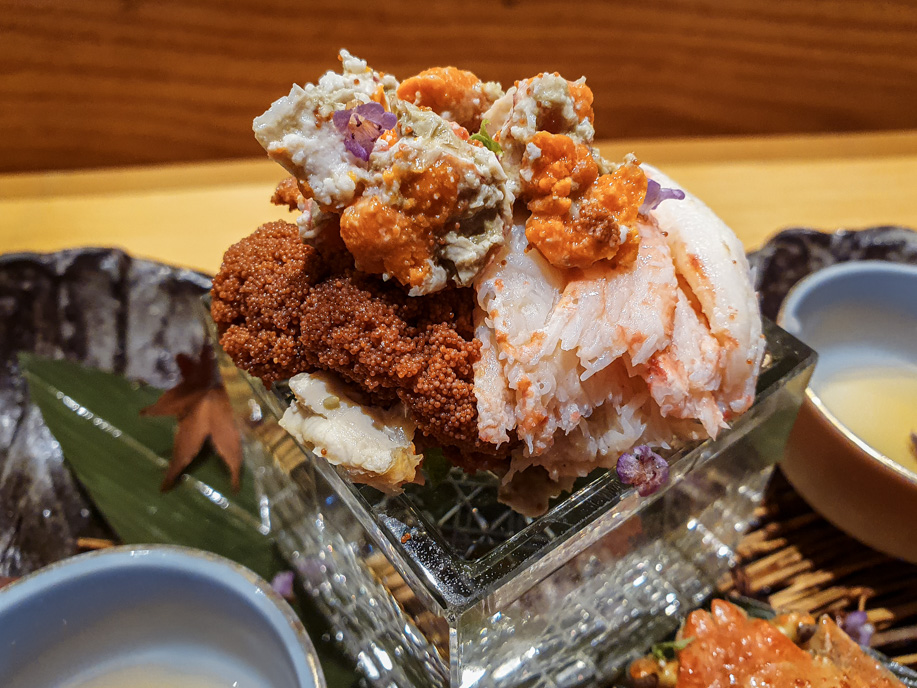Sushi is more than just a meal; it's an experience that has captivated food lovers across the globe. From its rich history and cultural significance to its health benefits and variations, sushi represents a unique blend of art and cuisine that has evolved over centuries. In this article, we will take an in-depth look at everything you need to know about sushi, ensuring you become well-versed in its intricacies.
In addition to exploring the various types of sushi, we will also cover its nutritional value, the best places to enjoy sushi, and tips for making sushi at home. Whether you are a sushi novice or a seasoned enthusiast, this comprehensive guide aims to enlighten and inspire you, making your sushi journey even more enjoyable.
So, grab your chopsticks and get ready to dive into the delicious world of sushi!
Table of Contents
What is Sushi?
Sushi is a traditional Japanese dish that typically consists of vinegared rice combined with various ingredients, such as seafood, vegetables, and occasionally tropical fruits. The term "sushi" refers to the rice itself, which is often seasoned with rice vinegar, sugar, and salt. It's important to note that sushi is distinct from sashimi, which consists of thinly sliced raw fish served without rice.
There are various forms of sushi, each showcasing unique flavors and textures. Sushi can be served in a variety of styles, including nigiri (hand-formed rice topped with fish), maki (rolled sushi), and temaki (hand rolls). The versatility of sushi makes it a favorite among many food enthusiasts.
History of Sushi
The origins of sushi can be traced back to Southeast Asia, where fish was preserved in fermented rice. Over time, this method evolved, and the concept of sushi as we know it today began to take shape in Japan during the Edo period (1603-1868). Originally, sushi was a way to preserve fish, and the fermentation process allowed it to be stored for extended periods.
By the 19th century, the modern form of sushi emerged in Tokyo, where chefs began serving fresh fish on top of small balls of vinegared rice. This style, known as nigiri sushi, quickly gained popularity and paved the way for sushi bars and restaurants worldwide.
Types of Sushi
Sushi comes in various forms, each with its own unique preparation and presentation. Here are some of the most popular types of sushi:
- Nigiri: Hand-formed rice topped with a slice of fish or seafood.
- Maki: Rolled sushi made with rice and fillings wrapped in seaweed.
- Temaki: Hand rolls filled with rice, fish, and vegetables, shaped like a cone.
- Sashimi: Thinly sliced raw fish served without rice.
- Uramaki: Inside-out rolls with rice on the outside and seaweed on the inside.
- Chirashi: A bowl of sushi rice topped with various sashimi and garnishes.
Popular Sushi Ingredients
The ingredients used in sushi can vary widely, but some of the most common include:
- Fresh fish (salmon, tuna, eel, etc.)
- Seafood (shrimp, octopus, crab, etc.)
- Vegetables (cucumber, avocado, carrots, etc.)
- Rice (short-grain rice seasoned with vinegar)
- Seaweed (nori)
Nutritional Benefits of Sushi
Sushi is not only delicious but also offers several health benefits. Some of the key nutritional advantages of sushi include:
- High in Omega-3 Fatty Acids: Fatty fish like salmon and tuna are rich in omega-3s, which are essential for heart health.
- Low in Calories: Sushi is often lower in calories compared to many other dining options, making it a great choice for those watching their weight.
- Rich in Protein: Fish and seafood are excellent sources of lean protein, which is important for muscle repair and growth.
- Vitamins and Minerals: Sushi ingredients, such as vegetables and seaweed, provide essential vitamins and minerals.
Making Sushi at Home
If you're inspired to make sushi at home, here are some essential tips to get you started:
- Gather Ingredients: Fresh fish, rice, nori, and vegetables are essential.
- Prepare Sushi Rice: Cook short-grain rice and season it with rice vinegar, sugar, and salt.
- Use a Bamboo Mat: A bamboo sushi mat makes rolling sushi easier.
- Practice Your Rolling Technique: Start with simple rolls before attempting more complex designs.
Basic Sushi Recipe
Here’s a simple recipe to make a classic maki roll:
Where to Eat Sushi
Finding the right place to enjoy sushi can enhance your culinary experience. Here are some tips for choosing a sushi restaurant:
- Look for Freshness: Choose restaurants known for their fresh ingredients.
- Read Reviews: Check online reviews to gauge the quality of the restaurant.
- Try Different Styles: Explore various sushi styles, from traditional to contemporary.
Sushi Etiquette
Understanding proper sushi etiquette can make your dining experience more enjoyable:
- Use Chopsticks or Hands: It's acceptable to use either, but traditionally, sushi is often eaten with hands.
- Dip Fish Side Only: When using soy sauce, dip the fish side of nigiri to avoid soaking the rice.
- Eat in One Bite: Sushi is designed to be eaten in one bite for the best flavor experience.
Conclusion
In conclusion, sushi is a fascinating culinary art that combines fresh ingredients, rich history, and health benefits. Whether you choose to enjoy sushi at a restaurant or venture into making it at home, understanding its various forms and etiquette can enhance your experience. Don't hesitate to share your favorite sushi moments in the comments below, and feel free to explore more articles on our site for further culinary inspiration!
Thank you for joining us on this sushi journey. We hope to see you again for more delicious content!
Also Read
Article Recommendations



ncG1vNJzZmivp6x7tMHRr6CvmZynsrS71KuanqtemLyue9WiqZqko6q9pr7SrZirq2hkuKK6jKysrKCZY7W1ucs%3D